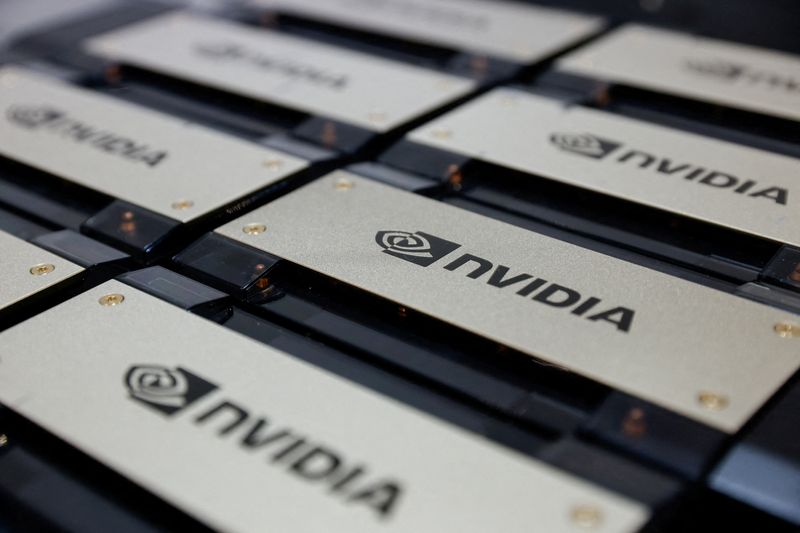TSX runs higher on rate cut expectations
SAN JOSE, Calif. - NVIDIA (NVDA), a dominant force in the Semiconductors industry with remarkable revenue growth of 114% over the last twelve months, has announced the release of new world foundation models (WFMs) under its NVIDIA Cosmos™ platform, aimed at transforming physical AI development. According to InvestingPro data, the company maintains a perfect Piotroski Score of 9, indicating exceptional financial health and operational efficiency. These models offer developers a customizable reasoning model for AI and control over world generation. Alongside, NVIDIA introduced two blueprints that leverage the NVIDIA Omniverse™ and Cosmos platforms for synthetic data generation to aid in the post-training of robots and autonomous vehicles.
Notable industry players such as 1X, Agility Robotics, Figure AI, and Skild AI have adopted the Cosmos platform to enhance their training data for physical AI. NVIDIA’s CEO, Jensen Huang, highlighted the potential of Cosmos WFMs to bring about significant advancements in robotics and related industries. With a robust gross profit margin of 75% and strong cash flows, NVIDIA demonstrates the financial strength to continue leading innovation in the AI sector.
The Cosmos Transfer WFMs are designed to ingest structured video inputs and produce controllable photorealistic video outputs, which can streamline AI training by transforming 3D simulations into realistic videos. Agility Robotics is set to use this technology for large-scale synthetic data generation. Additionally, Foretellix and Parallel Domain will implement the NVIDIA Omniverse Blueprint to simulate diverse driving conditions, while the NVIDIA GR00T Blueprint will help reduce data collection and augmentation time for synthetic manipulation motion generation.
Cosmos Predict WFMs, unveiled earlier at CES, enable the generation of virtual world states from multimodal inputs and can predict intermediate actions or motion trajectories. These models are customizable with NVIDIA’s physical AI dataset and can be post-trained using NVIDIA’s compute systems.
Cosmos Reason, another open and customizable WFM, provides spatiotemporal awareness and uses chain-of-thought reasoning to predict outcomes of interactions in natural language. This model can be used for data annotation and curation, as well as to create new vision language action models.
NVIDIA is also focusing on accelerating data curation and post-training for physical AI. Developers can post-train Cosmos WFMs using NVIDIA NeMo™ on NVIDIA DGX™ Cloud. Companies like Linker Vision and Milestone Systems are using NVIDIA NeMo Curator for video data curation.
In line with responsible AI practices, NVIDIA has implemented open guardrails on all Cosmos WFMs and is collaborating with Google DeepMind to integrate SynthID for watermarking AI-generated outputs.
The Cosmos WFMs are available for preview in the NVIDIA API catalog and listed in the Vertex AI Model Garden on Google Cloud. Cosmos Predict and Cosmos Transfer are accessible on Hugging Face and GitHub, while Cosmos Reason is available in early access.
This announcement is based on a press release statement from NVIDIA. For investors seeking deeper insights into NVIDIA’s financial performance and growth potential, InvestingPro offers comprehensive analysis through its Pro Research Report, featuring detailed metrics, valuation analysis, and expert insights. With over 20 additional ProTips available, subscribers can access valuable information about NVIDIA’s market position, financial health, and growth prospects.
In other recent news, NVIDIA has announced several significant developments across its product lines. The company unveiled the Llama Nemotron AI reasoning models, designed to enhance AI capabilities with improved accuracy and speed. These models are being integrated by major companies like Microsoft and SAP to bolster their AI services. Additionally, NVIDIA introduced the GR00T N1 model for humanoid robots, aimed at advancing robot reasoning and skill acquisition. Collaborations with firms like Google DeepMind and Disney Research are underway to further enhance robot learning capabilities.
NVIDIA also launched the RTX PRO Blackwell series of GPUs, targeting professionals in AI and engineering fields. These GPUs promise to accelerate workflows and are expected to be available later this year. In another move, NVIDIA released personal AI supercomputers, the DGX Spark and DGX Station, to empower AI developers and researchers. These systems are designed to facilitate large AI model development on desktops and cloud platforms.
Furthermore, NVIDIA introduced energy-efficient silicon photonics networking switches, Spectrum-X and Quantum-X, to improve AI data center infrastructure. These switches are said to offer significant power efficiency and network resilience improvements. The company continues to collaborate with industry leaders like TSMC to scale AI factories. These announcements highlight NVIDIA’s ongoing efforts to lead in accelerated computing and AI development.
This article was generated with the support of AI and reviewed by an editor. For more information see our T&C.
